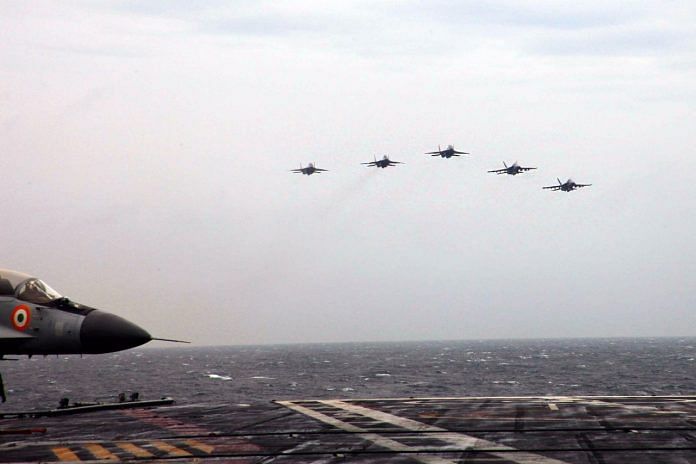Indian Navy maintains the exercise in the Bay of Bengal not directed against China
Manu Pubby on board USS Nimitz in the Bay of Bengal
After a decade of go-slow and scaling down following a strong reaction by China, the Malabar military exercise is back to where it started going big.
Three aircraft carriers – all of them the biggest combatants available with India, the US and Japan – converged in the Bay of Bengal in what has been termed as “our most complicated naval war game yet”.
The last time that so many carriers – the Japanese had their largest ship, the Izumo sail down for the exercise – operated together in these waters was 2007. It has been a long decade that has seen India-US relations going through an upswing – from joint training to India operating an increasing number of American platforms.
On display in Malabar 2017 was the high levels of interoperability the three navies have achieved for carrying out joint operations. India showcased its new MiG 29-K naval fighters for the first time while the US refueled from an Indian Navy tanker ship and undertook complex anti-submarine war games aimed at detecting stealth nuclear-powered boats.
“Malabar has been happening for 25 years now and 2017 is the biggest and the best. It continues to grow in scope and complexity. It’s a complex environment that we operate in and we have to know our Indian partners better,” said Rear Admiral Will Byrne, Commander of the Nimitz Carrier Strike Group.
Both the US and India insist that the exercise is not aimed at China or any other country. While there had been murmurs about the presence of a Chinese spy ship in nearby waters prior to the exercise, officials said that no such warship had been detected.
“This exercise has nothing to do with China or the present standoff. In fact, we had planned this long ago and this has been a regular feature,” said Rear Admiral Biswajit Dasgupta, the Indian Navy’s Eastern Fleet Commander.
The focus on anti-submarine operations, however, indicated that the increasing Chinese presence in the Indian Ocean region did weigh in on the planning. The Los Angeles Class nuclear attack boat of the US Navy and a Kilo class Indian submarine undertook several drills to skill sailors to detect underwater threats in the murky waters off the Indian coast.
The final phase of the exercise was marred by rough weather. The Indian Navy said that despite the challenging weather, it carried out several cross-deck helicopter operations as well as refueling.
“INS Vikramaditya, India’s aircraft carrier participating in the exercise launched MiG 29-K fighter aircraft to undertake combat missions against the US Navy F-18 fighter aircraft launched from USS Nimitz, the USN aircraft carrier, for combined crew training. In addition to the combat operations, the fighter aircraft from both navies undertook composite formation flying, thereby demonstrating another step in the interoperability aimed through this exercise,” the Navy Spokesperson said.
The US battle group is heading to the Gulf after the exercise while the Japanese ships will make their way back home through the contested waters off China. INS Vikramaditya is due to return to its base, having received its first badge of taking part in an international war game.



